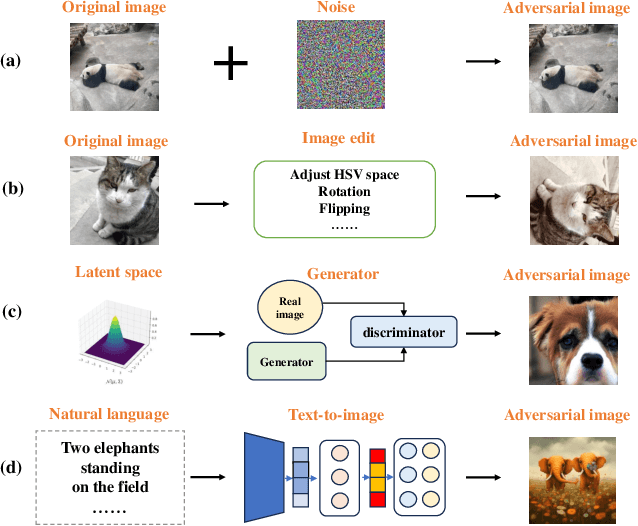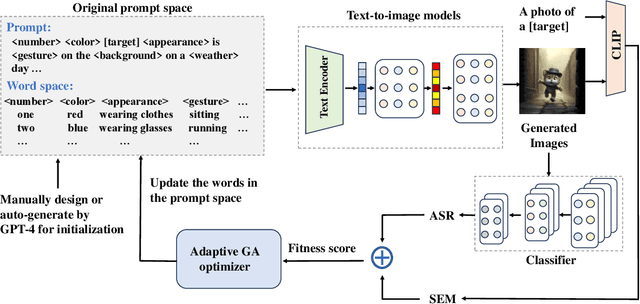Natural Language Induced Adversarial Images
Paper and Code
Oct 11, 2024



Research of adversarial attacks is important for AI security because it shows the vulnerability of deep learning models and helps to build more robust models. Adversarial attacks on images are most widely studied, which include noise-based attacks, image editing-based attacks, and latent space-based attacks. However, the adversarial examples crafted by these methods often lack sufficient semantic information, making it challenging for humans to understand the failure modes of deep learning models under natural conditions. To address this limitation, we propose a natural language induced adversarial image attack method. The core idea is to leverage a text-to-image model to generate adversarial images given input prompts, which are maliciously constructed to lead to misclassification for a target model. To adopt commercial text-to-image models for synthesizing more natural adversarial images, we propose an adaptive genetic algorithm (GA) for optimizing discrete adversarial prompts without requiring gradients and an adaptive word space reduction method for improving query efficiency. We further used CLIP to maintain the semantic consistency of the generated images. In our experiments, we found that some high-frequency semantic information such as "foggy", "humid", "stretching", etc. can easily cause classifier errors. This adversarial semantic information exists not only in generated images but also in photos captured in the real world. We also found that some adversarial semantic information can be transferred to unknown classification tasks. Furthermore, our attack method can transfer to different text-to-image models (e.g., Midjourney, DALL-E 3, etc.) and image classifiers. Our code is available at: https://github.com/zxp555/Natural-Language-Induced-Adversarial-Images.
 Add to Chrome
Add to Chrome Add to Firefox
Add to Firefox Add to Edge
Add to Edge